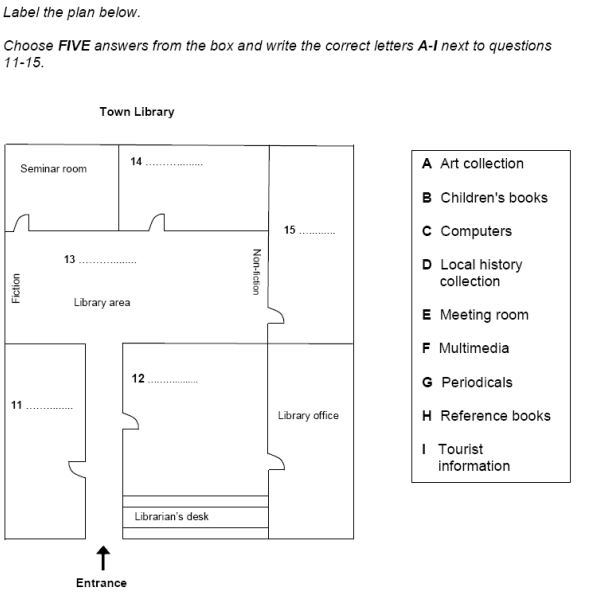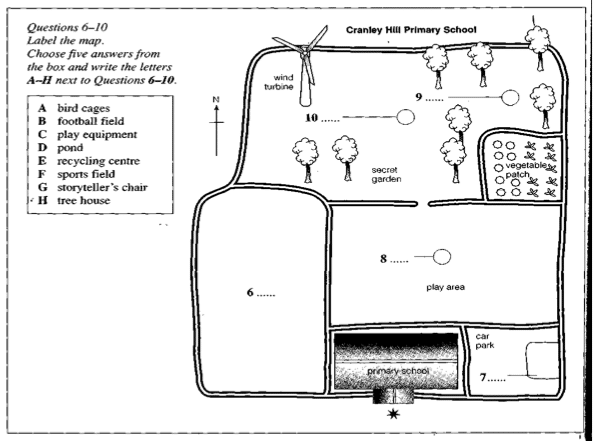This post will help you answer labeling map or plan IELTS questions more effectively by looking at common problems, useful language and giving you a strategy to use on test day.

Source: Cambridge English IELTS Past Papers.
This type of question could appear in any of the four listening sections but it is most likely to appear in section 2. In section 2 you will listen to just one person talking about a non-academic topic. It is often someone giving information to an audience about an event or showing them around a building, such as a university or a hotel. This section is a little more difficult than section 1.
Labeling a Map or Plan

Source: Cambridge English IELTS Past Papers.
This type of question requires you to identify the different parts of the map or plan by listening to and understanding a description or following directions. You will, therefore, be listening to a person describing a map or plan or to someone showing a group of people around and you have to follow their directions.
You might be given a list of possible answers, like above, or not and in this case, you will have to select the answer from the recording itself.
The information you need to answer the questions is in the same order as on the recording.
Common Problems
- Not being aware of the vocabulary and functional language used to describe locations and directions. See our useful language section below.
- Too much information. This question requires you to not only listen but to also follow a description or directions, understand the map or diagram and write short notes, all at the same time.
- Spelling. A common problem in all IELTS listening questions, but particularly in this type of question because you have to do so many things at the same time.
- Visualization. This refers to your ability to form mental visual images. You will be sitting in an exam room and the person talking will be describing a plan you have never seen before. Unless you can imagine what it looks like it is very difficult to answer these questions.
Useful Language
Below is a selection of vocabulary and phrases you should be aware of before doing the listening test:
- at the top/at the bottom
- on the left/on the right/on the far side
- North/South/East/West
- to the north/to the west
- slightly west of
- in the southwest/in the northeast
- in the middle of/in the centre of
- above/below
- inside/outside
- opposite/in front of
- left-hand side/ right-hand side
- clockwise/anticlockwise
- a little beyond
- just past
- before you get to
- adjoining
- enter via
- runs alongside
If you don’t understand any of these, please look them up and practice using them.
Listening Strategy
- Read the question carefully. Understand the map or plan and its features.
- Ask yourself where things are in relation to the questions. This should help you predict the answers and follow the talk.
- Think about where the person might begin their talk from. What is to their right and left? What is in front of and behind them?
- Look at the major parts of the map or plan to help you understand and navigate your way around.
- Predict what type of words might be the answer i.e. will it be a place, room, street, building etc.
- Listen to the beginning of the talk carefully because this will help you understand the context and help you follow the talk more easily.
- Visualize the place they are describing whilst the person is talking. Note down any possible answers, but be careful with distractors e.g. ‘this was the library but we decided to move it down to the end of the corridor’.
- Use signposting language like ‘The next room we are about to see is…’, or ‘If you now follow me to….’, to help you understand each stage of the talk.
- Make short notes on the question paper and then transfer your answers at the end using correct spelling.
Next Steps
For further listening practice, visit the British Council IELTS site.
I would also recommend you look at our articles on general listening tips and how to practice listening.
I hope you found this guide useful and if you have any comments or questions, please let me know below.
